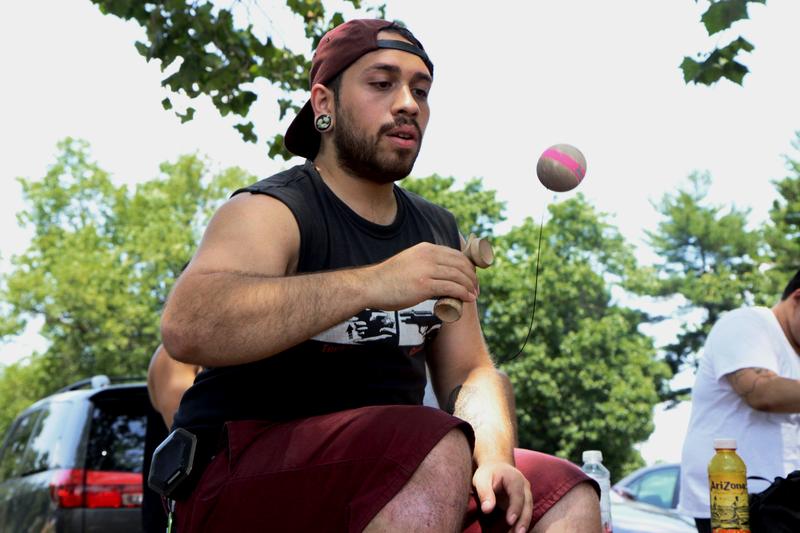
A traditional Japanese toy is getting some local residents to put down their smartphones.
Known as the kendama, the hobby made its way to Hawaii, then crossed the United States and has finally landed on the East Coast.
It resembles a ball and cup game, but it is much more than that. A wooden ball is strung to a handle, which is topped with two cups and a spike. Players perform tricks by swinging the ball and bouncing it off different parts of the handle.
In action, kendama looks like a combination of juggling, dancing and yo-yo-ing — there are dozens of tricks and combinations.
Kendama players, mostly young men, meet up regularly in the New York City area to freestyle and film each other performing. Many of them are obsessive about their hobby.
Ezra Lapidus, from Fairfax, Virginia, traveled all the way to Saddlebrook, New Jersey for a recent event. He and other players said that learning new tricks is like an addiction. "The feeling you get is just of ecstasy. You feel this sense of relief and accomplishment, and you did it yourself," he said.
The combination of artistry and physical dexterity attracts skateboarders, breakdancers and other creative people who can't sit still.
Joseph Duran, from the Bronx, first got into kendama after injuring his legs in a skateboarding accident last year. "I had to pick it up, because I started losing my mind at home," he said.
Doctors told him it would be two or three months before he could walk again. But he started walking after only a few weeks, and he credits kendama for his progress. "It was a lot of knee bending, and that was what I needed," he said.
The kendama has been around for centuries, so why is it attracting a following now? Vincent Dimaya, of Saddle Brook, New Jersey, said it's a way to burn off extra energy and stay focused in the age of smartphones and social media. He spends a lot less time on his phone than he used to, and much more time talking to his friends in the kendama community.
Attempting tricks over and over has taught Dimaya to be patient and persistent. "It’s almost a meditative state. As soon as you land it, it just relieves all the pressure in the world," he said.
Correction: Vincent Dimaya is from Saddle Brook, New Jersey, not Jersey City.
